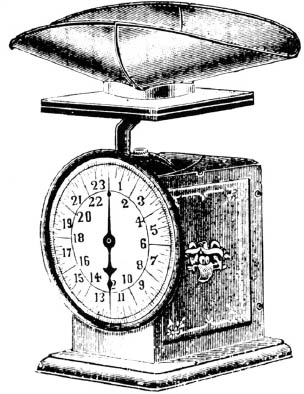
It’s more usual in American cookbooks—even ones like this—for recipe measurements to be pretty precise. You’ve probably noticed that this book positively bubbles with imprecision. There isn’t a recipe in here that can’t be changed (and has been, as a matter of fact) in a fit of exuberance, or boredom, or of noticing you don’t actually have some of the ingredients listed. That’s the way I like to cook. Once in awhile it’s fun to cook very precisely and specifically, with special ingredients added (and there are some cookbooks that really reward that method—anything by Julia Child and Richard Olney springs immediately to mind, among others). But generally, my feeling is that cooking is about knowing what you’ve got and what you like to do with it. For that kind of cooking, too much emphasis on precise measurements is not just beside the point, sometimes it downright gets in the way.
However. That said, you also need the friendly support of lists of ingredients, and measurements of ingredients, to act at least as a benchmark from which to judge your own efforts . . . at least, that’s how I think of recipes when I read them, for pleasure or for information.
All of the measurements and temperatures in Jam Today are American ones, which means if you’re cooking in the United Kingdom, and you want to use these as a guide, you have to make some adjustments. To give you an idea of what the equivalences are, more or less, I’ve listed a few here that I hope will be helpful—at least, they have been for me, who’s spent some time cooking in both places.
Temperature
212 F = 100 C
225 F = 110 C
250 F = 130 C = Gas ½
275 F = 140 C = Gas 1
300 F = 150 C = Gas 2
325 F = 170 C = Gas 3
350 F = 180 C = Gas 4
375 F = 190 C = Gas 5
400 F = 200 C = Gas 6
425 F = 220 C = Gas 7
450 F = 230 C = Gas 8
475 F = 240 C = Gas 9

These are approximate. But in all the places I’ve used ounces—“oz.”—, a little more or less in the gram—“g.”—area won’t really matter . . .
½ oz. = 10 g.
1 oz. = 25 g.
2 oz. = 50 g.
3 oz. = 100 g.
5 oz. = 150 g.
9 oz. = 250 g.
10 oz. = 300 g.
14 oz. = 400 g.
1 lb. = 450 g.
1 lb., 1½ oz. = 500 g.
Butter, Shortening, Cheese, and Other Fats
1 tbsp. = ⅛ stick = ½ oz. = 15 g.
2 tbsp. = ¼ stick = 1 oz. = 30 g.
4 tbsp. = ½ stick. = 2 oz = 60 g. = ¼ cup
8 tbsp. = 1 stick = 4 oz. = 115 g. = ½ cup
16 tbsp. = 2 sticks = 8 oz. = 225 g. = 1 cup
32 tbsp. = 4 sticks = 16 oz. = 450 g. = 2 cups
The easiest way to remember, for me, how to convert grams to ounces, is to think that an American pound of pasta—sixteen ounces—is a little less than the equivalent English package of 500 grams. So an English package gives a slightly more lavish result than an American package. Then I work back from there.